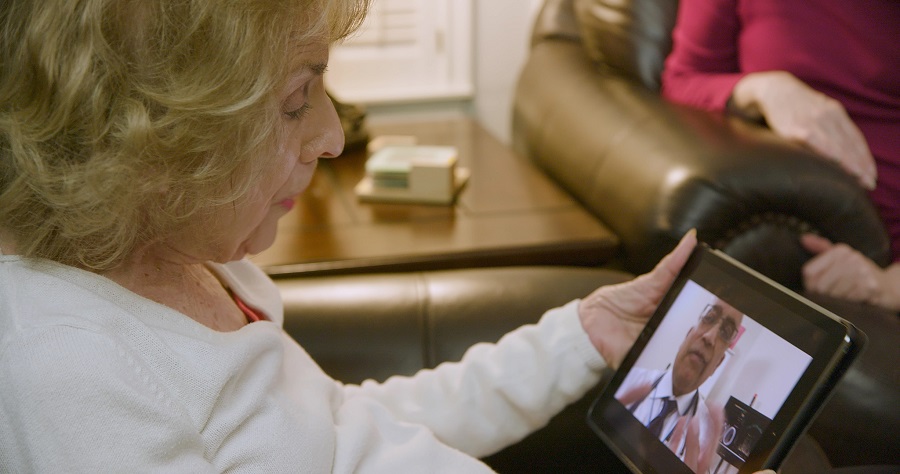Get the Most Out of Your Telehealth Visit

Telehealth, also called virtual visits, has been available for years. But it took the COVID-19 pandemic for health care providers and patients to start using it regularly. Now it’s here to stay. Whether you’ve had experience with telehealth or this is your first time, these tips can help you plan for — and get more out of — a virtual medical appointment.
How Common Is Telehealth?
Many health care providers are continuing to offer telehealth appointments, even though their offices are open for in-person visits. According to a July 2021 McKinsey & Company report, 13 to 17% of medical appointments are now conducted by phone or video. While that percentage may not seem especially impressive, it’s 38 times higher than before the pandemic began. McKinsey & Company also found that virtual visits are even more common among health care specialists. For example, nearly 50% of psychiatric visits and 30% of substance use visits happen via telehealth.
What You Need for a Virtual Visit
Your health care providers schedule telehealth visits just like office visits, with one patient right after another. It’s important to be ready for your appointment so you can get the most out of your visit. Before your appointment, gather the information you will need, such as:
- A list of your symptoms, questions and concerns
- Your medication list, including any over-the-counter medications, vitamins and herbal remedies you use
- Names of other doctors you see
- Your insurance card
- A credit card, if you will have a copay due
If your health care provider offers a patient portal, sign up before your appointment. Patient portals are important communication tools for virtual visits and many other aspects of your health care, including test results, appointment reminders, messages and more. UMass Memorial Health patients can register for the MyChart patient portal. When you’re enrolled in MyChart, you have access to a virtual check-in process that you can complete before your appointment.
Tips for Telephone Appointments
Even though you can talk on the phone anywhere, you will need a quiet, private place for a call with your provider. A phone appointment is as important as an in-person or video visit. These tips can help make it successful:
- Avoid locations with background noise and other distractions.
- Don't drive during the call.
- Check the ringer on your phone. Is it loud enough to hear when your health care provider calls? Turning up the volume and setting it to vibrate can also help. You don’t want to miss your appointment time.
- If you get a call from a blocked or restricted number at your appointment time, answer the call. Providers may be calling from a phone without caller ID.
Ways to Improve Call Quality Sometimes you may hear an echo during a video chat. You can reduce or eliminate it by:
- Using headphones
- Reducing the volume of speakers on your device
- Moving your microphone away from the speakers
Tips for Video Appointments
A video meeting may require more advance preparation than a phone call. Give yourself enough time to set up.
- Call the health care provider’s office to find out what apps or systems they use for video calls. Ask for directions, and test the system before you have your appointment.
- If you’re a UMass Memorial Health patient, check out the directions on our website.
- If the visit will be on Zoom and you’re using a mobile device, you will need to download the Zoom app in advance.
- Be ready a few minutes before your appointment time. Someone from the office may call early to ask questions and check you in beforehand.
- Set up your device in a location with a strong Wi-Fi signal.
- Charge your device in advance. Or make sure you can plug it in.
- Check your lighting. If there’s a light behind you, your provider may not be able to see your face clearly. Make sure your location is bright enough for your health care provider to observe your physical symptoms as necessary.
- Log on to the app and wait for your meeting to start. If you’re waiting longer than 15 or 20 minutes, call the office to make sure there hasn’t been a technical or scheduling glitch.
Ways to Improve Video Quality
- Restarting your computer before your call
- Setting up your computer or mobile device close to your Wi-Fi router
- Making sure other people on your Wi-Fi network aren’t using a lot of its bandwidth (Streaming videos or movies, playing online video games or using video chat applications use a lot of data, which can leave you with poor video quality for your medical appointment.)
- Closing extra browser windows or programs that use a lot of bandwidth
Keep Up with Routine Care
If you have been putting off seeing your doctor or having routine screenings, now is a good time to call for an appointment. Whether you do it in person or virtually, keeping up with your routine care can help you maintain and improve your health. Guest Blogger: Siting Liu, Analyst, System Quality and Clinical Informatics, UMass Memorial Health, helped roll out an expanded and improved telehealth program in the first months of the COVID-19 pandemic. She continues to help enhance the hospital system’s capabilities for serving patients virtually.

